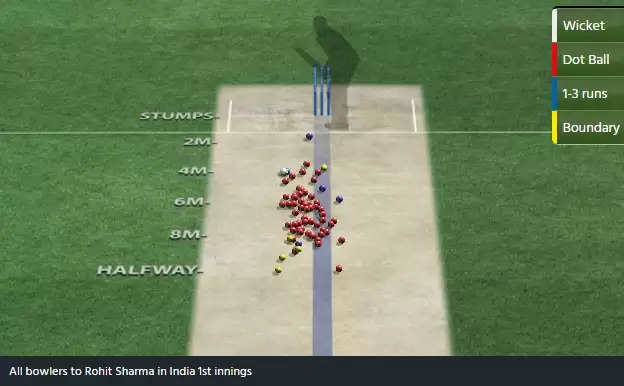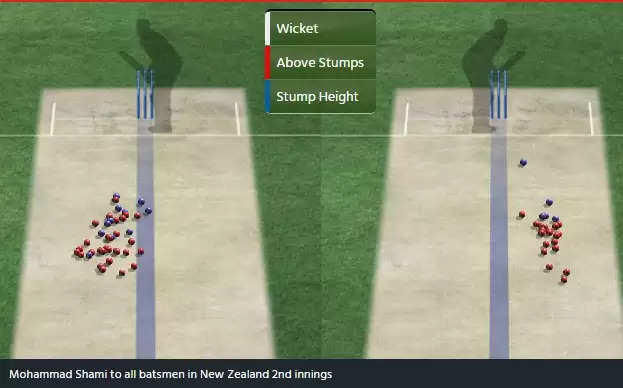Is this India’s best chance to beat England in the Virat Kohli era?

Let’s not talk about the last Test series between India and England in the latter’s backyard in 2018. It’s already known that India competed really well, but didn’t achieve the desired results. This is the time to talk about how they can emerge victorious this time. At the end of the day, it’s about the scoreline on paper; competing hard just isn’t enough now.
Here we take a look at a few positives as well as some concerns for India while heading into the series. So, let’s jump straight to the main content with a to-the-point discussion.
A brief discussion on the ENG vs IND series
India’s batting unit is more robust
India’s batting unit is comfortably superior in comparison to the 2018 series one.

Rohit Sharma is a better all-around batsman than Shikhar Dhawan, and this is true in the longest format too now. Rohit has displayed some applaudable discipline and patience, with very few technical tweaks. He plays close to his body and lowers his bat speed when required, and leaves the ball more assuredly.
In the WTC final, Rohit was the only Indian batsman to score 30 or more runs in both innings. In the first innings, he was rightly calm against the good-length deliveries (6-8 m) as shown below.

WTC Final: Rohit Sharma in the first innings | Credits: ICC
Even though Rohit hasn’t got a big score as an opener in the overseas Tests yet, that might not be too far away. It will require plenty of effort – discipline, patience and concentration for a long time.
Cheteshwar Pujara, who didn’t start in the XI last time, has enjoyed growth in his stature recently. Also, he has been providing good stability and would hope to amass big runs on this trip. Since Mayank Agarwal is out of the first Test now, India could experiment opening with Pujara, with Hanuma Vihari slotting at one down.
ALSO READ: ENG vs IND: Will Kohli be the king of another English summer?
The recent innings of Virat Kohli and Ajinkya Rahane in Adelaide, Melbourne (only Rahane) and Southampton, in pace-bowling friendly conditions, are inspiring. The skilled duo stepped up and displayed their compact techniques in challenging conditions. However, both should avoid playing shots tentatively, reminding themselves that patience is the key.
92%
https://t.co/7gE0h7gNh7 pic.twitter.com/YDTzKNioHh
— TUSHAR
(@mainlycricket) June 19, 2021
Rishabh Pant is a more established international batsman as compared to his position in 2018. Pant has faced quality bowling attacks around the world, which provided him good opportunities to progress, and has gained valuable experience. With a fair bit of success in recent times, the southpaw’s trust in his own game would have been boosted; and, of course, a sense of responsibility is a good realisation.
However, Pant needs to get better at certain aspects of his batting. He needs to maintain his calm when the bowlers bowl defensive lengths and shouldn’t throw his bat towards the ball wildly. Also, he must hold his shape while facing the seaming deliveries.
India have better balance and a formidable bowling attack to counter England
With the rise in Ravindra Jadeja’s reputation as an all-rounder, India have tried the spin-duo combination in overseas Tests as it augments the team balance. India might not go with the same combination in the first Test but they have a good option ready if things don’t work out well.
It’s quite obvious that Jadeja adds batting depth and provides decent control with the ball. On the other hand, R. Ashwin, who was excellent in the WTC final, is a more skilled spinner with greater wicket-taking ability. The off-spinner was also amazing in the Test series in Australia. Ashwin’s improved batting, especially overseas, is a good bonus these days.

WTC Final: R. Ashwin shrewdly pitched the ball fuller when India needed wickets | Credits: ICC
ALSO READ: ENG vs IND: India In England – Selection Changes? No, Futile. Tweaks? Yes But They Won’t Make A Huge Difference
Jasprit Bumrah missed the first two Tests on the tour last time; who knows he could have made a difference in the Edgbaston Test. Unless for an external injury, he is likely to play all the five Tests this time around, given the rest period and training time. So, that’s an advantage as compared to the previous series.
Bumrah, who was just three Tests old then, has played 20 Tests as of now. India would want the speedster to gain and maintain his rhythm, unlike the WTC final, which was a forgettable game for him! Bumrah’s angle of release might be very useful in this series.
India have two quality pacers in Ishant Sharma and Mohammed Shami. However, Ishant was reluctant to bowl at the stump height or below against openers in the first innings of the WTC final, and Shami hardly found his spot in the second innings. That being said, they can bowl aggressively, bringing more modes of dismissals into the play, in favourable conditions.

WTC Final: Mohammed Shami was all over the place in the second innings. Can he do better in the ENG vs IND series? | Credits: ICC
India also have Mohammed Siraj in their ranks now, who offers more control than Umesh Yadav. Siraj can start in the first XI itself, and is likely to come in the XI later if he doesn’t. The right-arm quick is a skillful pacer for English conditions, thanks to his ability to swing the ball, and seam it too. Thus, India’s attack is more versatile this time around.
England’s thin batting unit could trouble them in the ENG vs IND series
England’s batting unit has been struggling for quite some time now, particularly at their home. It has taken a further hit as Ben Stokes has taken a break. Stokes, while batting in the middle-order, added the much-needed solidity and helped England in recovering many times.
Ollie Pope is also suffering due to an injury and might not start the series.
The skipper Joe Root is averaging just 30.86 at home since the conclusion of the 2018 series. His technical issues against pace-bowling, while facing the full-length and good-length deliveries, are regularly being exposed. Root wasn’t great against India in 2018, with just two 50+ scores including a century in the series. The Indian pacers might trap him by incoming deliveries or by luring him to edge the ball.
Zak Crawley seems to have some issues against the moving ball and may find it difficult against India in testing conditions. The hosts may juggle with the No. 3 spot again!
Dan Lawerence may start if Pope doesn’t play, but he is unlikely to succeed well because of his not-so-great gameplay against quality pace-bowling.
ALSO READ: Can Sam Curran fill the void of Ben Stokes?
Jonny Bairstow averages 20.4 at home since ‘The Wisden Trophy’ against West Indies in 2017. He has been struggling against the moving ball regularly and might warm the bench throughout the series.
Jos Buttler was pretty average in the home series against Australia and West Indies; however, he recovered well against Pakistan. Anyway, he is unlikely to have a great time in the India series.
England, though, have a positive in their opening pair. The gritty Rory Burns has an average of 39 or more in the last three out of four home series. Burns looks to survive and patiently bides his time against the moving ball.
Dominic Sibley has a runs-per-innings ratio of 25.7 in his last 10 innings in England, however, his true value is shown by his balls-per-innings ratio of over 71. Runs are undoubtedly important; however, a healthy BPI is crucial as it ensures a good start and helps in avoiding a collapse.
England have got Haseeb Hameed in their squad, who despite being an opener, may compete for the one down spot as the series progresses.
The Ollie Robinson factor for the ENG vs IND series
James Anderson and Stuart Broad – England’s biggest strengths – are absolute monsters against India in their own backyard. Hardly anyone has challenged the defensive techniques of the Indian batsmen as the English duo.
Ollie Robinson can be a surprise factor against Kohli and co., and make a significant difference. Robinson is primarily a seamer and can swing the ball as well. He is quite accurate and his high release-point is an added advantage. The right-arm quick has been among the best pacers in England’s domestic circuit for the past few years.
Robinson is also a decent batsman in the lower-order as his First-Class cricket average of 22.46 and a balls-per-dismissal ratio of over 37 suggests.
The tail-problem for India
India need to have a good strategy for the last four wickets. The Indian tailenders are not skilled enough with the bat, and they can’t be blamed; however, they could try to apply themselves a bit more. Runs from the tailenders isn’t a necessity but a good luxury in such conditions.
As far as the bowling against the tailenders is concerned, India shouldn’t be over-attacking in a hurry; instead, they may opt to bowl defensively depending on the situation, along with normal line and lengths. Also, with India facing this issue for so long, you’d expect them to finally come up with good tactics in an important series.
All that being said, Sam Curran might not enjoy the series this time as he did in 2018, as the teams would have got more info about him and are already aware of the threat.

